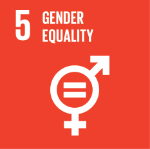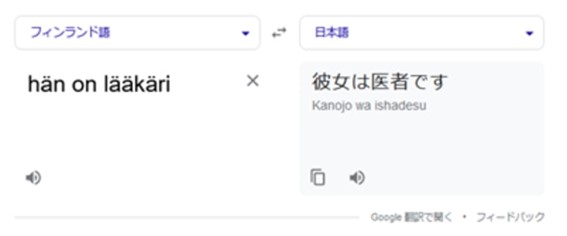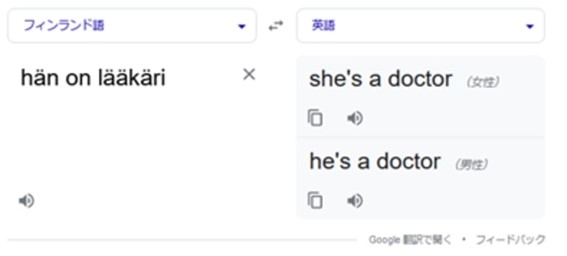Note: This blog post was originally written in Japanese for our Japanese website. We used our machine translation platform Translation Designer to translate it and post-edit the content in English. The original Japanese post can be found here.
In recent years, global awareness of gender equality is increasing more and more, such as it being incorporated in United Nations SDGs.

In Japan, too, there have been changes over the past few decades, from the colors of school bags and supplies for elementary school students to the names of occupations. As we say gender bias, we all subconsciously have stereotypes and prejudices about gender differences and gender roles.
Does machine translation contain gender bias?
The following article shares the problem of gender bias in machine translation.
| Gender Bias: the Challenge of 'He' vs. 'She' for MT, MultiLingual (Links to an external site.) |
In the article, examples of machine translation results for Finnish into English are presented. Finnish has no distinction between male and female pronouns. For this post, we also explored how the results are in Japanese.
Can machine translation avoid gender bias in Japanese?

Translating pronouns
In Japan, a neutral term for "nurse" was officially adopted in 2002 to be used for both men and women. Before that, there were separate terms to call a male nurse and a female nurse. Not just limited to Japan but globally, in the past, women were often associated with the word "nurse" in general.
Machine translation basically outputs a translation that is faithful to the original text. However, the article that we introduced above shares an interesting example of machine translation in Finnish. When using the Finnish word "hän" (which refers to he/she in English) with "doctor," the machine translation output resulted in "he." The doctor was regarded as a man.
- Finnish: "hän on lääkäri"
- English: "He is a doctor"
Machine translation engines learn by reading a large amount of data to improve accuracy. But if the data contains gender bias, an AI will learn the regularity of the data as it is. Therefore, if a training data contains a lot of information that connects doctors to males or nurses to females, the shown example above makes sense as an output.
Then how about in Japanese? When we applied the same sentence to Google Translate, it was translated as "she is a doctor" unexpectedly.

However, since it's not clear whether "hän" refers to a male or a female, "she" might be a mistranslation too. Furthermore, when we tried the translation from Finnish to English ourselves, Google Translate showed two translation results.

This translation is more faithful to the original sentence.
We can't tell from this sentence alone whether this "doctor" is actually a man or a woman. In an actual translation project, we would read the sentences before and after and change the "hän" part to "he" or "she" according to the context.
Gender-sensitive language
Similar problems are likely to occur when using machine translation in languages that traditionally use gender-neutral pronouns. To make things more complicated, gender-sensitive language is spreading now.
For example, Swedish has a pronoun "hen" as a gender-neutral pronoun instead of using "hon" (she) or "han" (he). More languages are starting to use gender-neutral words. There are also cases where existing words add a new usage as a gender-neutral word, such as the use of “they” in place of “he/she” in English. It is necessary to check if your machine translation output has the correct translation for these gender-neutral words and that the translations are suitable for the document.

Summary
Recently, these gender-sensitive words and phrases are on the rise, especially in European languages. Although there are differences in trends depending on the country, region, and cultural background, language is constantly changing according to the consciousness of the speaker. So, along with machine translation engines, we also need to be prepared to support languages that change with the times.
Kawamura's translation services
Kawamura International provides translation services in a wide range of fields, including IT, software localization, medical devices, pharmaceuticals, tourism, manufacturing, finance, legal affairs, SAP-related documents, and all other general business documents.
We assign the most suited translator according to your industry and area of expertise. Since our linguists are all experienced professional translators who have cleared our screening standards, you can rest assured in terms of quality.
Feel free to reach out to us if you need professional translation services or have any other questions about translation and localization services in general.
_CMYK_OL.png)

